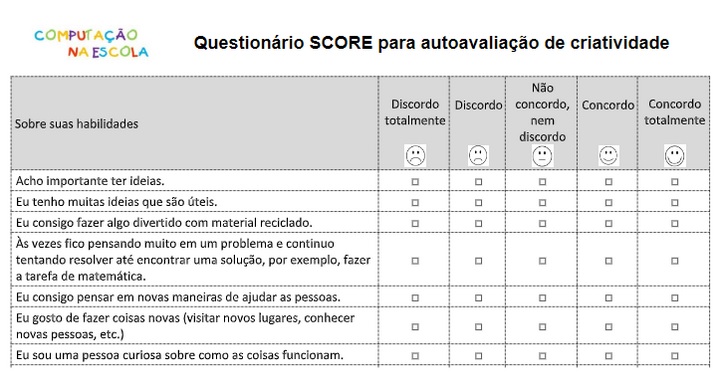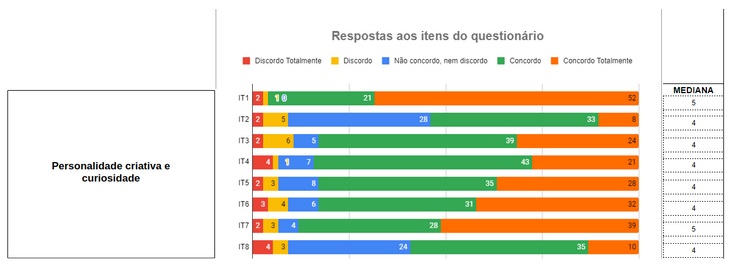SCORE – A Model for the Self-Assessment of Creativity in Computer Education in Basic Education
Creativity is part of 21st Century Skills and is increasingly valued in personal development and in the job market. One way to develop creativity is through teaching computing. The practice of understanding, solving, automating and analyzing problems and creating algorithmic solutions is part of computational thinking.
However, there are currently no examples of widely used and current assessment methods to assess creativity in the context of computing education in K-12 in a reliable, valid and easy way to be applied . In this context, SCORE (aSsessing COmputing cREativity) is a model for assessing students’ creativity in the context of computing education in elementary school/middle school based on the student’s perception. The model was systematically developed, including a self-assessment questionnaire as a measurement instrument and a google sheet to facilitate the analysis of the collected data.
The assessment in terms of reliability and validity of the measuring instrument, based on 76 responses from students in K-12, indicates a high internal reliability (Cronbach’s alpha = 0.961). The model’s validity analysis was performed through the correlation between the items, for which excellent results were also obtained. Through exploratory factor analysis, only three items with a factor load below the cutoff point of 0.3 were identified, suggesting the exclusion of these items. The analysis of the total sample (n = 197), also carried out with higher education students, confirms these results obtained in the analysis using only data from K-12.
As a result, a creativity self-assessment model was developed, including eight factors: creative personality and curiosity, expanding skills and knowledge, connection, boldness, originality, fluency, flexibility and elaboration.
SCORE’s self-assessment questionnaire consists of 53 items and uses a 5-point Likert scale:

The collected data are analyzed to obtain information about the students’ creativity. To facilitate the analysis, an analysis model was developed using a google sheet (English version) and a user manual. From the data entered, the spreadsheet automatically calculates the frequency of responses and the median for each item of the measuring instrument.

More information
SCORE 1.0 – Um Instrumento para Autoavaliação de Criatividade voltado ao Ensino de Computação. In: Anais do Simpósio Brasileiro de Informática na Educação, Natal, Brasil, 2020. (Vídeo)
Lehmkuhl, G., Gresse von Wangenheim, C., Martins-Pacheco, L. H., Borgatto, A. F., Alves, N. da C. SCORE – A Model for the Self-Assessment of Creativity Skills in the Context of Computing Education in K-12. Informatics in Education, 20(2), 2021.
Lehmkuhl, G. Desenvolvimento de um modelo de avaliação de criatividade no ensino da computação na educação básica. 2020. Trabalho de Conclusão de Curso. (Graduação em Sistemas de Informação) – Universidade Federal de Santa Catarina.
Acknowledgements
Escola de Educação Básica Coronel Antônio Lehmkuhl
Escola Municipal Santa Cruz da Figueira
Departamento de Informática e Estatística da Universidade Federal de Santa Catarina
Todos os demais alunos e colegas que participaram do estudo.






